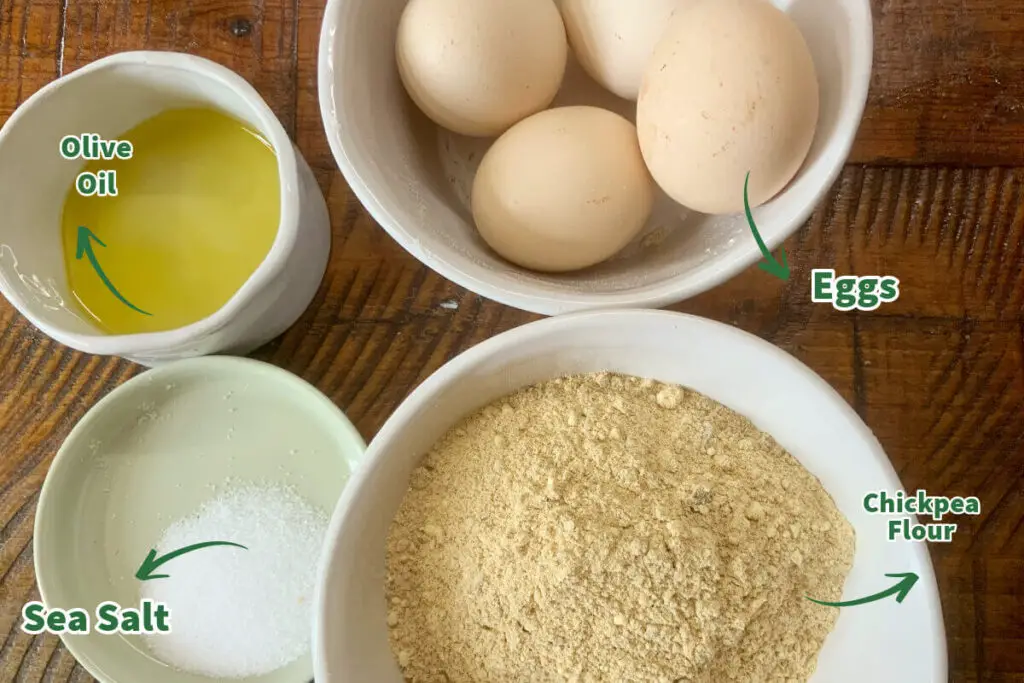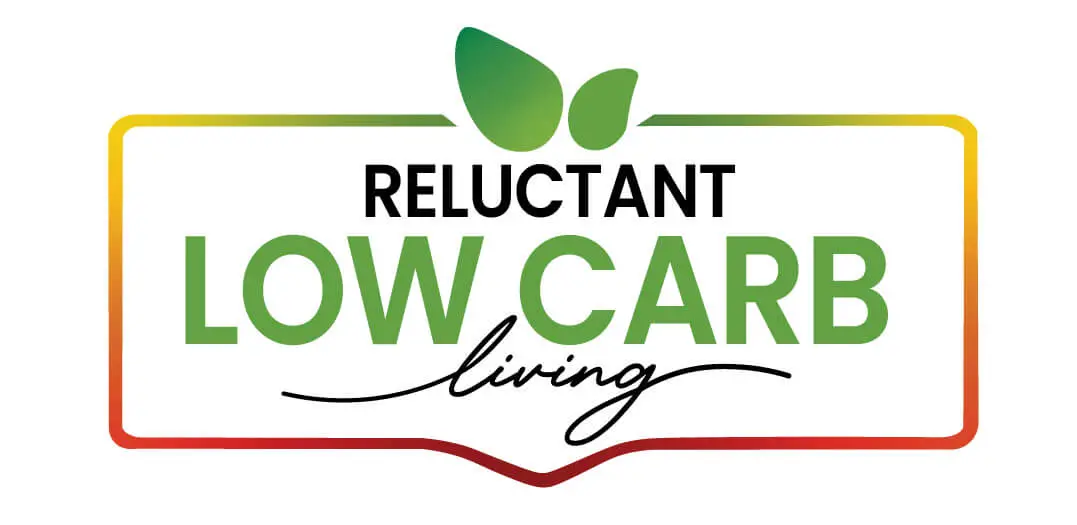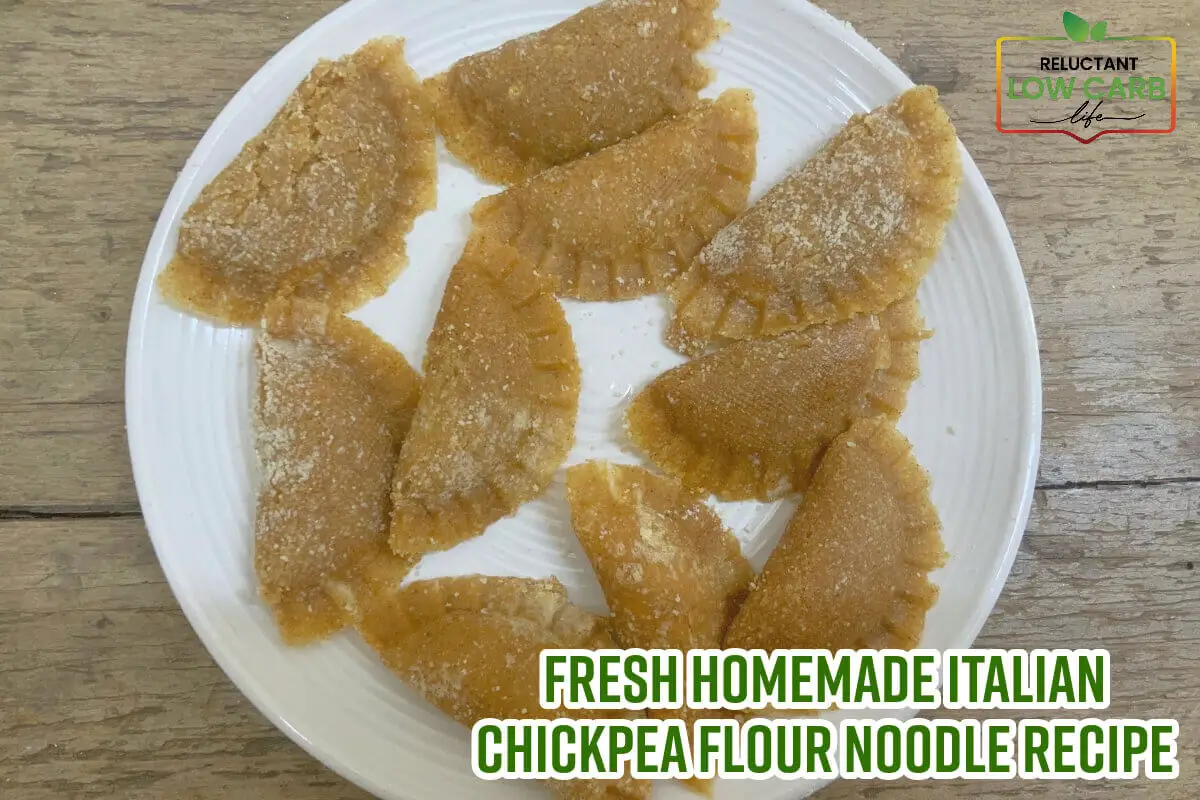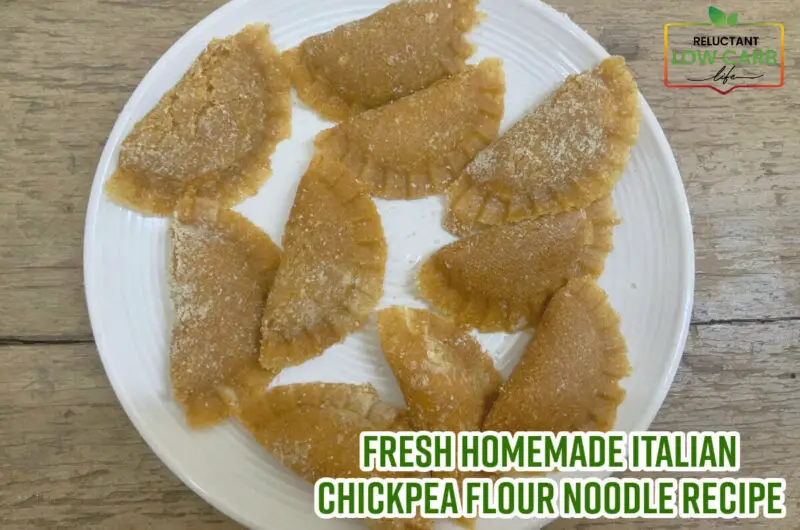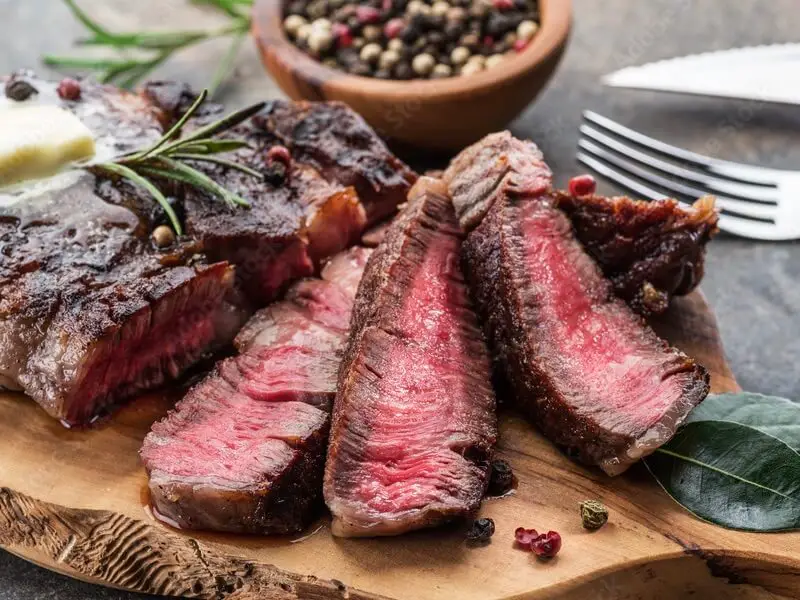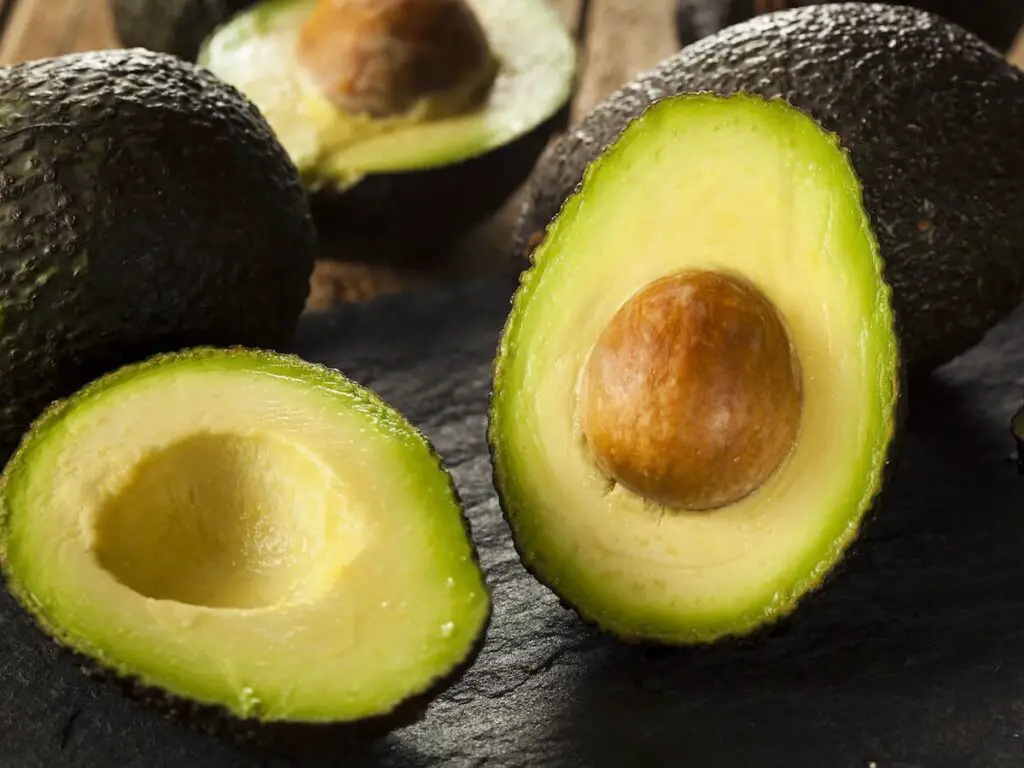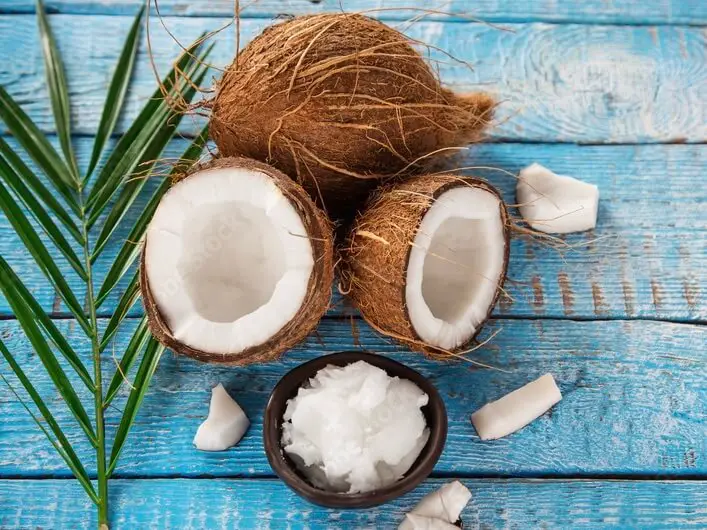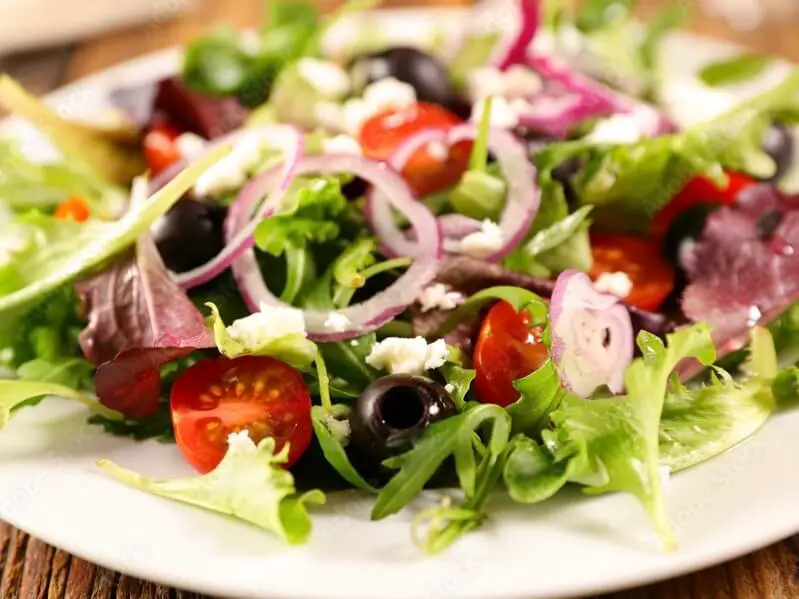Crafting your homemade noodles not only plunges you into an enriching culinary journey but also presents a myriad of benefits over their store-bought counterparts:
Embracing a keto or low-carb lifestyle doesn’t mean you must forgo some of your most-loved noodle dishes. With some innovation in the kitchen, you can craft homemade noodles that align perfectly with your dietary needs, ensuring that you don’t miss out on the comfort and joy of slurping up those delectable strands.
Table of Contents
- Benefits Of Crafting Low-Carb Or Keto Noodles At Home:
- Why We Use Chickpea Flour?
- Why Make Homemade Noodles?
- Fresh Homemade Italian Chickpea Flour Noodle Recipe
Benefits Of Crafting Low-Carb Or Keto Noodles At Home:
We like to make our own keto or low-carb noodles for many reasons. Here are some of our top reasons.
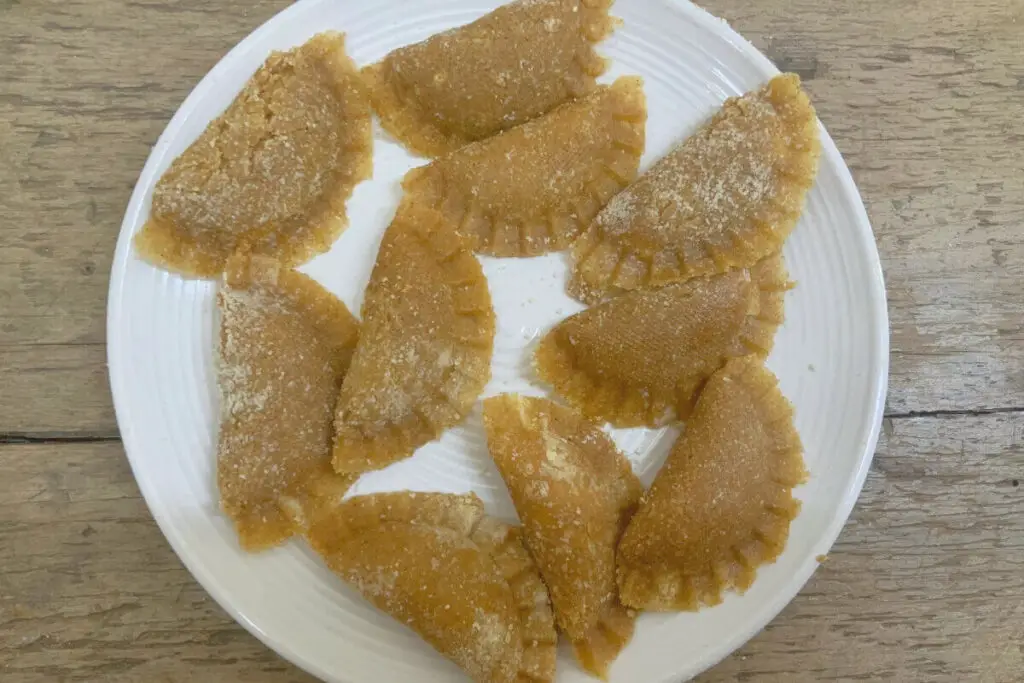
- Ingredient Transparency: One of the most rewarding aspects of homemade food is knowing exactly what goes into it. By making your keto-friendly noodles, you eliminate any guesswork about hidden carbs or unwanted additives.
- Tailored Nutritional Content: Craft your noodles to fit your specific dietary macros. Whether counting net carbs or focusing on high-fat content for keto, homemade noodles can be modified to fit these criteria.
- Flavor & Texture Control: Store-bought low-carb options might not always meet your taste and texture preferences. By making your own, you can tweak them to get just the proper bite and flavor.
- Diverse Ingredients: Low-carb and keto noodles are not just limited to zucchini noodles (zoodles). Various ingredients include almond flour, coconut flour, and chickpea flour.
- Cost-Effective: While specialized keto products can be expensive off the shelves, making your own can often be more budget-friendly in the long run, especially if you consume them regularly.
- No Compromises on Favorite Dishes: From spaghetti carbonara to pad thai, with your homemade keto noodles, you can recreate low-carb versions of your favorite noodle dishes without compromising on taste.
- Easy to Make -With the right ingredients and tools in your kitchen, they are pretty easy to make.
Why We Use Chickpea Flour?
A Culinary Gem Chickpea flour, also known as besan in many parts of South Asia, is a versatile and nutritious flour made from ground chickpeas. It’s widely loved and used for numerous reasons:
- Gluten-Free, Keto, And Low-Carb: Chickpea flour offers a gluten-free alternative to wheat flour for those with gluten sensitivities or celiac disease. It is a great flour to use on a keto and low-carb diet.
- Rich in Protein: Chickpeas are a good source of plant-based protein, and the flour retains this quality.
- Fiber And Nutrients: Chickpea flour is rich in fiber, iron, phosphorus, and other beneficial nutrients.
- Versatility: It’s used in various dishes, from pancakes to cakes to soups, and as a thickening agent.
- Flavor Profile: Chickpea flour has a unique taste that can be described as earthy and slightly nutty. This flavor profile is often appreciated in various dishes.
Roasting Chickpea Flour, Why We Roast It, And How
Roasting chickpea flour is used by many chefs and home cooks to enhance its flavor and aroma. The Raw flour can taste bitter, but roasting can transform it into a nuttier, more pleasant flavor profile.
Here’s a simple method to roast chickpea flour:
Heat a Pan: Place a heavy-bottomed pan or skillet on low to medium heat.
Add Chickpea Flour: Once the pan is warm, add the chickpea flour. The amount you add will depend on your requirements, but generally, you don’t want to overfill the pan. It should be in a thin layer so that it roasts evenly.
Stir Regularly: Roast the flour, stirring constantly to ensure even browning and to prevent burning. The flour can burn quickly, so keeping an eye on it and adjusting the heat as necessary is essential.
Look for Color Change: The flour gradually changes from a pale yellow to a deeper golden brown. This color change is a good indicator of the roasting process.
Cool Before Use: Once roasted, remove the flour from the pan and allow it to cool completely before using it or storing it. The roasting process will have released oils from the flour, so storing it in an airtight container to retain its freshness is essential.
Roasted chickpea flour can be used in various savory and sweet dishes. The roasted version is particularly favored in Indian cuisine, where it’s used to make sweets like besan laddoo and masala or savory snacks like ‘besan chilla’ or ‘pakoras.’ The enhanced flavor due to roasting adds depth and richness to the dishes.
Why Make Homemade Noodles?
Making homemade noodles can be a delightful culinary adventure and offers several advantages over store-bought versions. Here are some reasons why one might choose to make noodles from scratch:
- Taste and Texture: Homemade noodles often have a fresher, richer flavor and can be tailored to have the exact texture you prefer, whether chewy, soft, or somewhere in between.
- Ingredient Control: You have complete control over the ingredients when you make your noodles. This means avoiding preservatives, artificial colors, and other commercial noodle additives. You can adjust the ingredients based on dietary needs or preferences, such as making gluten-free or whole-wheat noodles.
- Economical: While there’s an initial investment in ingredients and possibly equipment, making noodles at home can be more cost-effective in the long run, especially if you frequently consume them.
- Versatility: You can customize your noodles to suit the dish you’re preparing. Want wider noodles for a hearty beef stroganoff or thinner ones for a delicate broth? It’s entirely up to you.
- Therapeutic Process: Many people find the act of making noodles to be a therapeutic and rewarding process. Kneading the dough, rolling it out, and cutting it into strands can be a form of relaxation and a way to connect with one’s food.
- Cultural And Traditional Significance: For many, making noodles is a way to connect with their cultural or family traditions. Handmade noodles might be a staple for special occasions or family gatherings.
- Freshness: Store-bought dried noodles can sit on shelves for a long time, while fresh homemade noodles offer a taste that’s hard to match.
- Environmental Consideration: By making your noodles, you can reduce the use of packaging, thus creating less waste. This is especially true if you buy your ingredients in bulk.
- Sense Of Accomplishment: There’s a particular pride in serving a dish entirely from scratch. It can be a conversation starter, making the meal feel even more special.
- Better Pairing With Sauces: Homemade noodles often have a slightly rougher texture compared to the smooth surface of many store-bought varieties. This texture can help sauces adhere better to the noodle, enhancing the overall eating experience.
While making homemade noodles does require more time and effort than simply opening a package, the benefits, from flavor to personal satisfaction, often make the endeavor worthwhile for many home cooks.
Fresh Homemade Italian Chickpea Flour Noodle Recipe
